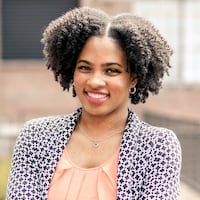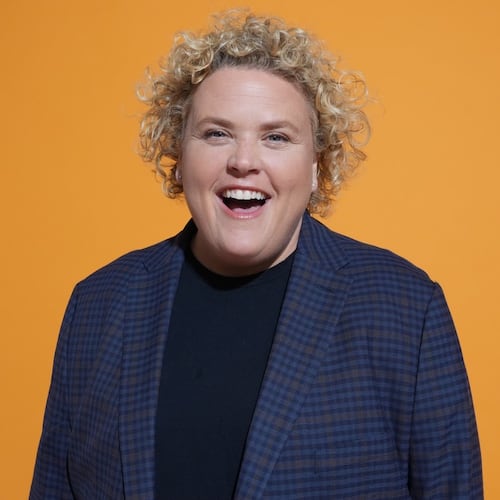Every June, Pride Month is held as a celebration of the lesbian, gay, bisexual and transgender community. While the familiar rainbow flag has become a symbol of LGBT Pride, there are several other flags that represent the different groups and sexualities of the community.
Below are some of the different flags and what they mean, according to Pride.com.
Credit: Pride.com
Credit: Pride.com
Traditional rainbow flag
This six-color version of the rainbow flag came in 1979 and hung from San Francisco lampposts. A seventh color, turquoise, had been dropped due to several issues with having an odd number of colors, Gizmodo reported.
The flag has had some different variations including one with a hot pink stripe by artist Gilbert Baker and one commissioned following the assassination of California’s first openly gay elected official, Harvey Milk, and used from 1978-1999. That version had a turquoise stripe.
Credit: Pride.com
Credit: Pride.com
Philadelphia people of color inclusive flag
Philadelphia added two colors — black and brown — to the flag after noting that LGBT people of color are not usually included in the LGBT community. Previously, accusations of discrimination against black and brown people at Philadelphia gay bars had been hurled at the city.
Credit: Pride.com
Credit: Pride.com
Transgender pride flag
Monica Helms, a transwoman, designed this flag in 1999.
"The light blue is the traditional color for baby boys, pink is for girls, and the white in the middle is for those who are transitioning, those who feel they have a neutral gender or no gender, and those who are intersexed," she said according to Pride.com. "The pattern is such that no matter which way you fly it, it will always be correct. This symbolizes us trying to find correctness in our own lives."
Credit: Pride.com
Credit: Pride.com
Progress pride flag
Designed by Daniel Quasar, who identifies as queer and nonbinary, the flag builds on the Philadelphia people of color inclusive flag. It adds white, pink and light blue as a reflection of the colors of the transgender flag. Meanwhile, the brown and black stripes represent people of color and people who died of AIDS.
Credit: Pride.com
Credit: Pride.com
Bisexual flag
This flag was designed by Michael Page and is inspired by an older symbol of bisexuality. That symbol was “biangles,” which are two overlapping pink and dark blue triangles. The flag shows overlap between the stereotypical colors for boys and girls, pink and blue, as a way to spotlight the bisexual community.
Credit: Pride.com
Credit: Pride.com
Pansexual flag
This web-created flag, which launched in 2010, combines three colors. Pink represents women, yellow represents people who are nonbinary and gender-nonconforming and blue represents men. The colors show the interest of pansexual people in all genders as partners.
Credit: Pride.com
Credit: Pride.com
Asexual flag
Created in 2010, the asexual pride flag was inspired by the Asexual Visibility and Education Network logo. It represents many asexual identities, including people who are graysexual, which is the fluid area between sexuality and asexuality as well as people who are demisexual. Demisexual people are only sexually attracted to people if they have an emotional connection with their partners.
Credit: Pride.com
Credit: Pride.com
Labrys lesbian flag
Sean Campbell, a gay graphic designer, created the flag in 1999. It features a labrys, which is an ax-like weapon used by Grecian amazons.
Credit: Pride.com
Credit: Pride.com
Polyamory pride flag
This flag features the symbol for the infinite number pi in gold, which represents the infinite number of partners people who are polyamorous can have. The gold color represents emotional attachment while the color red shows passion, blue shows openness and honesty among partners and black shows solidarity with people who have to hide because of outside pressure, according to Yes, We Are Polyamorous.
Credit: Pride.com
Credit: Pride.com
Polyseuxal flag
Polysexuality is the attraction to multiple genders but not all. On the flag, the pink represents attraction to females and blue, the attraction for males. Green denotes an attraction to people who don’t conform to either gender.
Credit: Pride.com
Credit: Pride.com
Intersex flag
Intersex International Australia designed this flag in 2013, which purposely shows nongendered colors in celebration of living outside the binary.
Credit: Pride.com
Credit: Pride.com
Genderfluid/genderflexible flag
This flag showcases femininity with the color pink, masculinity with the color blue and a combination of the two in the form of purple. White represents the lack of gender and black symbolizes all genders, including third genders.
Credit: Pride.com
Credit: Pride.com
Nonbinary flag
Kye Rowan created this flag in 2014 in response to people who are nonbinary feeling inadequately represented by other flags. Still, it’s meant to sit alongside the flag, with yellow representing gender outside a binary, white for people with many or all genders, purple for people who feel both binary male and female or fluid between them and black showing the agender community.
Aromantic flag
The green in aromantic flags celebrate people who don’t experience romantic attraction in their lives.
Credit: Pride.com
Credit: Pride.com
Agender flag
People in the agender community reject gender. Their flag shows black and white stripes that represent the absence of gender. Green represents nonbinary genders.
Credit: Pride.com
Credit: Pride.com
Straight ally flag
An ally is someone who is not a part of the LGBT community but who stands in support of it. This flag aims to make everyone feel included at Pride marches as they celebrate other people’s sexualities.
About the Author
The Latest
Featured

















